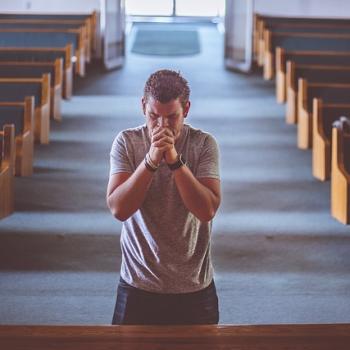
What will the Church be like after the Coronavirus and everything returns to “normal”? Well, we are not sure. We don’t even know that there will be an “after” of the Coronavirus. We are even less sure if there will be a return to “normal.” There are some things, though, that seem apparent that will affect the life of churches going forward.
1) The model of doing church most of us have been using is broken. The current model of church life most of us have been operating on is dated, to say the least. The model was built in the 1800s and really hit its zenith in the post-war religious boom in and through the 1950s. The society it was built to reach no longer exists. Now, we have been making adjustments to that model for many years and have been getting some life out of it, at least until the Coronavirus. The Coronavirus was a disruption of the model. The way our model worked was building-centric. We built great houses of worship and educational spaces. We developed teachers to fill each classroom with students who would come, participate in a lesson, and then transition to worship. The model was Sunday School as a feeder to worship. While many churches have returned to worship, very few have started Sunday School again. When they do, the classrooms may be very empty because the close proximity of people in a small Sunday School classroom creates a sharing ground for the virus. The model of doing church will then have to change substantially.
2) When the restrictions are lifted, people will want more interaction not less. Church is a high-touch venture, by definition. Over these many months, there have been few opportunities for social contact. We have been deprived of the embrace of our friends and the warmth of a strong handshake. We have been deprived of the presence of our community. When our normal life resumes, people may be shy at first, but they will likely want social contact. They will also need social contact. Recent reports document the damage social isolation is having on our populace. Millions are suffering from depression and millions more are suffering from anxiety. Shockingly, about 25% of our young people have considered suicide during the shutdown according to recent reports. Humans are social beings. We need social contact. When the restrictions are removed we can expect that people will need a sense of togetherness and belonging. They will need the church to create events that meet these needs for their people and their communities.
3) The electronic revolution is here to stay. For many pastors, we had a sudden introduction to social media and Livestream at the beginning of the shutdown. Some of us who had never recorded a service were now recording services every week. In my congregation, we started having drive-in worship services, and we thought that would be the primary vehicle for worship. While the drive-in service has been effective, our live stream has been more effective. We have more viewers on the internet than we would ever have in-person. That is true of most other congregations as well. What that means is very important. People still have a spiritual hunger, but they want the option of using a different delivery system. While many congregations have incorporated electronic delivery systems for worship, look for many more to use electronic media for spiritual formation, pastoral care, and discipleship as well.
4) A significant temptation we will face is to go back to the way things were. When the restrictions are lifted, so many of our congregations will be tempted to go right back into their facilities and do things the way they have been done for centuries. Going backward, while tempting, is not the path to growth. It is the path to stagnation and decline. You cannot reach 21stcentury people with 19thcentury methods. It will not work. While the Gospel never changes, the methods we use to share the Gospel have always shifted based on the circumstances the Church has encountered. So, do not be afraid of change. Embrace it. God just might be doing something very surprising.















